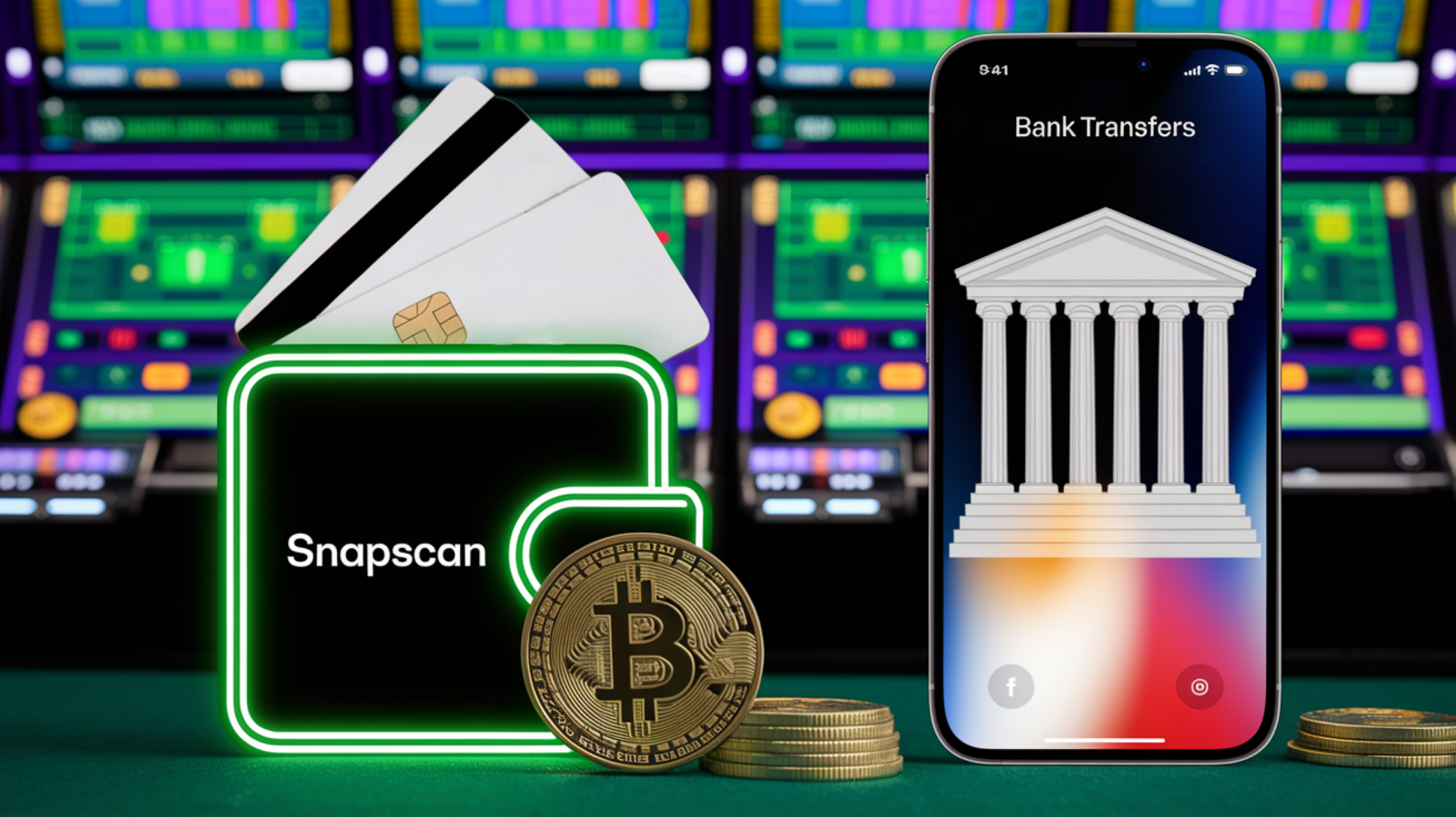In recent years, digital payments have become an essential part of our lives in South Africa. Whether you’re paying for groceries, settling bills online, or sending money to family, various payment methods make life easier. However, if you’ve ever tried making a large payment via a bank transfer, mobile wallet, or other payment methods, you may have encountered unexpected limits. But why do these payment methods have lower limits? In this article, we’ll explore why this happens and how it affects consumers and businesses alike.
Payment Methods in South Africa
South Africa has a diverse and constantly evolving payment ecosystem, offering a wide range of methods for consumers to choose from. This variety reflects the country’s dynamic financial landscape, which includes both traditional banking systems and modern digital payment solutions. Bank transfers remain one of the most widely used and trusted methods in South Africa. They offer a secure and well-regulated way of moving money between accounts, whether for personal payments or business transactions. Bank transfers are particularly favored for their reliability, especially for larger payments that require a higher degree of security. However, one downside of bank transfers is the longer processing time, especially for cross-border payments, which can take several business days.
In contrast, mobile wallets have gained significant popularity, particularly for smaller, everyday transactions. Apps such as SnapScan, Zapper, and PayFast allow users to make quick payments via their smartphones, with a user-friendly interface that simplifies the process. These mobile payment solutions are increasingly used for in-store purchases, online shopping, and even donations. Mobile wallets are highly convenient, offering instant payments without the need for physical cards or cash. However, their limits and potential security risks can be concerns for some consumers. Meanwhile, cryptocurrencies like Bitcoin are slowly gaining traction in South Africa, offering a decentralized alternative to traditional currencies. While crypto payments provide greater anonymity and security, their volatility and regulatory uncertainty limit their widespread use for everyday transactions. Each of these payment methods offers different levels of convenience, but the imposition of limits on certain transactions raises important questions about security and regulation.
What Are Payment Limits
Payment limits are restrictions placed on the maximum amount of money that can be transferred, spent, or withdrawn using a particular payment method within a specific time frame. These limits are an essential feature of the financial ecosystem and help maintain order and security in the system. Payment limits can be set for individual transactions, daily or weekly limits, or even monthly maximums. They vary depending on the type of payment method being used and the policies of the financial institution or payment processor.
The primary reasons for setting payment limits are:
- Security: Limits help protect both consumers and financial institutions by reducing the potential damage in case of fraud or unauthorized transactions.
- Fraud Prevention: By restricting the size of transactions, financial institutions can better detect and prevent suspicious activities such as money laundering or identity theft.
- Regulatory Compliance: Countries have regulations in place that require financial institutions to impose payment limits to ensure they are in line with anti-money laundering (AML) laws and other financial regulations.
Typically, these limits are set based on the risk assessments made by financial institutions and payment processors. They take into account factors such as the customer’s account history, verification status, and geographical location. Depending on the method used, limits can be more or less stringent, and financial institutions may adjust them based on changing regulations or security concerns. In South Africa, for example, regulations like the Financial Intelligence Centre Act (FICA) play a critical role in determining the payment limits imposed by various institutions. As a result, these limits can vary significantly across different payment methods, and they can differ depending on the verification level of the user.
Why Some Payment Methods Have Lower Limits in South Africa
In South Africa, there are several reasons why certain payment methods impose lower limits. These limits are primarily driven by the need to balance security, compliance with financial regulations, and risk management. Let’s explore the factors that contribute to this.
- Regulatory Requirements South Africa has a robust regulatory framework to prevent financial crimes such as fraud, money laundering, and terrorist financing. The Financial Intelligence Centre Act (FICA) mandates that financial institutions monitor and report large transactions and verify the identities of users making significant payments. As a result, payment methods that are not fully verified or those used for high-risk transactions often have lower limits to comply with these regulations. For example, new users or users with unverified accounts might face lower transaction caps, as banks and payment processors need to ensure that these transactions do not involve illicit activities. This helps financial institutions and the government track suspicious financial behavior and maintain the integrity of the financial system.
- Security Concerns Digital payments have revolutionized how people make transactions, but they have also opened up new opportunities for fraudsters. With the rise of cybercrime, financial institutions are particularly cautious when it comes to large transactions, especially those made via mobile wallets or online platforms. Payment limits help reduce the impact of fraud, ensuring that if an account is compromised, the amount that can be lost is limited. By imposing limits on transactions, payment processors can better monitor unusual activities and take action before any significant financial loss occurs. This is especially true for mobile wallets and payment apps that are more susceptible to hacking compared to traditional banking systems. As a result, lower limits help strike a balance between convenience and security, providing consumers with peace of mind while preventing significant fraud risks.
- Risk Management Strategies Financial institutions implement various risk management strategies to ensure that their services are safe for consumers. One of the ways they do this is by setting payment limits based on the risk profile of each transaction. Banks and payment processors assess the risk of each payment based on factors like the user’s transaction history, location, and the type of payment being made. If a payment is considered high risk—for instance, if it is an unusually large amount, a first-time transaction, or involves a new recipient—it may trigger a limit. This precaution helps banks prevent fraudulent activities while ensuring that high-risk transactions are closely monitored. In South Africa, these risk management strategies are particularly important in a country that faces a high rate of financial fraud and cybercrime. Therefore, banks often impose lower limits to minimize the risk of large-scale fraud and protect both consumers and the broader financial system.
By understanding these factors, it becomes clear why some payment methods in South Africa have lower limits. While these restrictions can sometimes be inconvenient, they are necessary for maintaining a secure and regulated financial environment.
Regulatory Environment in South Africa
South Africa’s financial system operates under a strict regulatory framework that aims to ensure stability, prevent financial crimes, and protect consumers. The South African Reserve Bank (SARB) plays a pivotal role in regulating the country’s financial landscape. This central bank is responsible for monitoring financial institutions, ensuring that they comply with the nation’s laws, and setting guidelines to maintain economic stability. The regulatory environment is designed to curb illicit activities like money laundering, fraud, and financing terrorism, which are major concerns for any financial system. To achieve this, South Africa has established several key laws that govern transactions, including the Financial Intelligence Centre Act (FICA), which mandates strict checks for opening bank accounts and processing significant financial transactions.
FICA ensures that financial institutions implement comprehensive know-your-customer (KYC) procedures before allowing customers to engage in high-value transactions or open new accounts. As a result, unverified accounts face limitations, and financial institutions are required to monitor and report suspicious activities. The imposition of lower payment limits is an important part of this process, as it acts as a safeguard to reduce the risk of fraud and money laundering. Moreover, these restrictions are designed to ensure that any large transactions are scrutinized for legitimacy, helping prevent financial crimes. In addition to FICA, the Financial Sector Conduct Authority (FSCA) oversees the integrity of the financial system by enforcing rules and guidelines that ensure consumer protection. Both of these regulatory bodies contribute to a highly controlled financial environment in South Africa, which directly influences the limits placed on various payment methods.
Security Risks and Fraud Prevention
Cybercrime is an ongoing challenge for many countries, including South Africa, where incidents of online fraud, identity theft, and hacking are prevalent. As the use of digital payment methods grows, so too does the risk of financial crimes. In response to this, payment service providers impose limits to protect consumers and the payment system itself. These limits are especially important when dealing with large transactions, where the potential for significant losses is higher. By limiting the size of individual payments, financial institutions can reduce the overall risk exposure to fraud and minimize the damage if a breach or fraudulent activity occurs. For instance, many online payment platforms or mobile wallets will require additional verification steps for larger payments, such as verifying the identity of the user or confirming transaction details through a secondary communication channel.
Fraud prevention systems are designed to detect suspicious patterns of behavior, such as unusually large payments or transactions to high-risk locations. As part of their security measures, many payment methods place restrictions on how much can be transferred within a specific time frame. These safeguards are intended to reduce the opportunity for fraudsters to carry out large-scale illegal activities. Payment providers and banks also utilize encryption, multi-factor authentication, and fraud detection algorithms to identify and prevent unauthorized transactions. However, even with these advanced tools in place, lower payment limits provide an additional layer of defense. They ensure that if fraud does occur, the amount of damage is minimized, helping to maintain trust in the financial system.
Risk Management by Financial Institutions
Financial institutions, including banks and payment processors, are tasked with managing the risk associated with various payment methods, particularly when it comes to large transactions. Every time a high-value payment is made, there is an increased potential for fraud, especially if the payment method is vulnerable to attacks. Institutions mitigate this risk by implementing transaction limits, ensuring that they have control over the volume of high-risk transactions. This strategy allows banks to monitor transactions more effectively and identify any unusual patterns of behavior. By setting lower limits on payments, banks can prevent large-scale fraud or unauthorized access to customer funds, reducing the likelihood of significant financial losses for both the consumer and the institution.
Banks also rely on sophisticated credit scoring systems and fraud detection technologies to assess the risk of transactions. For example, if a payment method is frequently used for large transactions, it may raise a red flag within the system, prompting the bank to review the transaction more closely. Payment methods that consistently process large amounts could be considered high-risk, and banks may impose stricter limits or additional verification steps. This process helps banks keep track of their exposure to fraud and make informed decisions about the safety of individual transactions. Financial institutions also rely on these risk management tools to comply with regulatory requirements, ensuring that they are protecting both their customers and the financial system from malicious activities.
Types of Payment Methods and Their Limits
Different payment methods come with varying limits, depending on the type of service being used, the account’s verification level, and the overall risk involved. Here’s a breakdown of how different payment methods set transaction limits:
| Payment Method | Transaction Limit | Verification Requirement |
| Bank Transfers | Limits depend on account type (e.g., savings vs. business) | Higher limits with full verification, such as FICA compliance |
| Mobile Payments | Usually lower for unverified accounts | Identity verification increases the limit |
| Cryptocurrency Payments | Varies by platform and security protocols | Higher limits after platform-specific KYC checks |
Bank Transfers: Bank transfers are one of the most secure payment methods, but they can come with specific transaction limits. These limits often depend on the type of account being used (e.g., personal savings accounts versus business accounts). For higher-value transfers, banks may require additional verification steps, including confirming the transaction through a secure channel or providing supporting documents. For example, a business account might have higher limits than a personal account due to the nature of its transactions. However, for large transactions that exceed certain thresholds, additional verification is typically required.
Mobile Payments: Digital wallets and mobile payment apps, such as PayPal, SnapScan, and Zapper, generally impose lower transaction limits for unverified accounts. These platforms tend to offer higher limits once the user has completed the identity verification process, such as uploading documents or confirming personal details. Unverified accounts are seen as higher risk, so they are often restricted to smaller amounts until they have undergone further checks. As the user completes the verification process, they can enjoy higher limits for their transactions.
Cryptocurrency Payments: Cryptocurrencies have become an increasingly popular payment method, though their transaction limits depend on the platform being used. Most cryptocurrency exchanges or wallets impose limits based on security measures and anti-money laundering (AML) regulations. For example, a platform might impose a lower limit for unverified accounts, which is increased once the user completes the required KYC (Know Your Customer) process. Cryptocurrency payments also often have a greater degree of anonymity, which can make them more susceptible to illegal activities. Therefore, platforms typically set these limits to comply with international financial regulations and ensure that transactions are legitimate.




